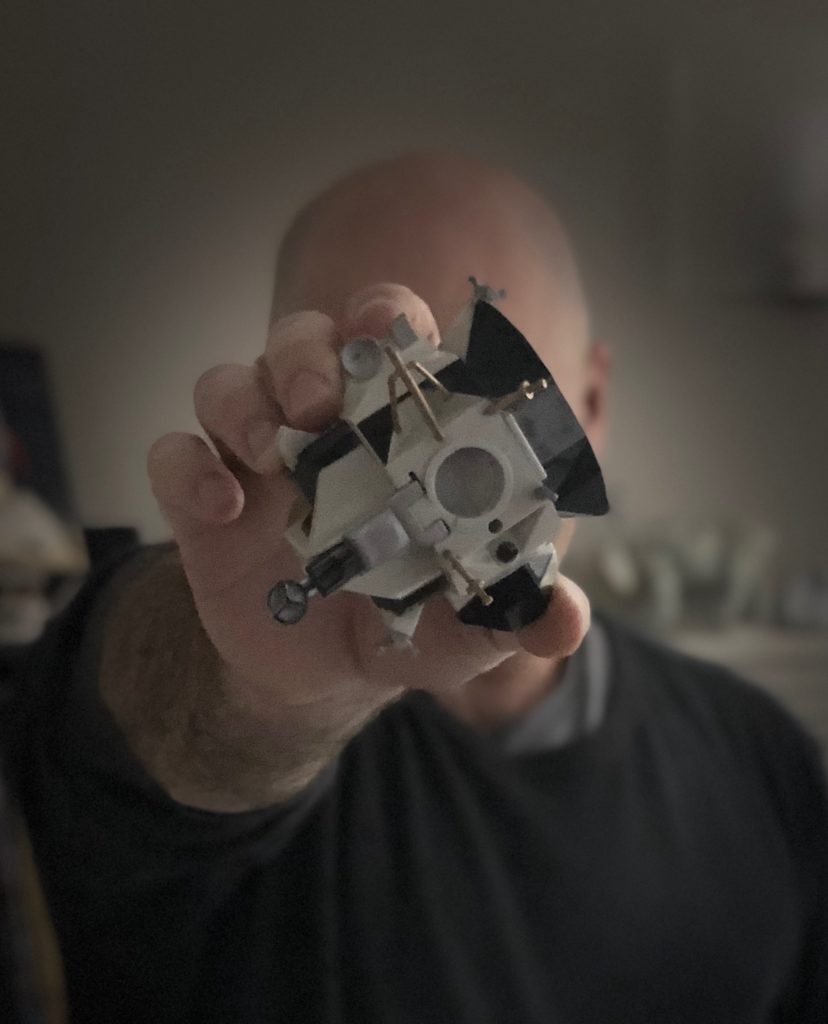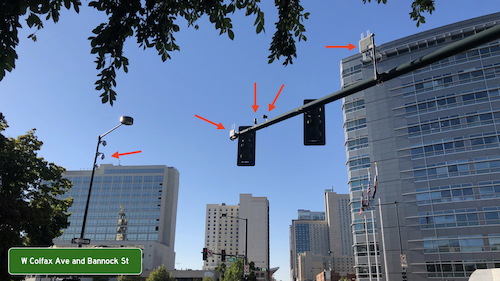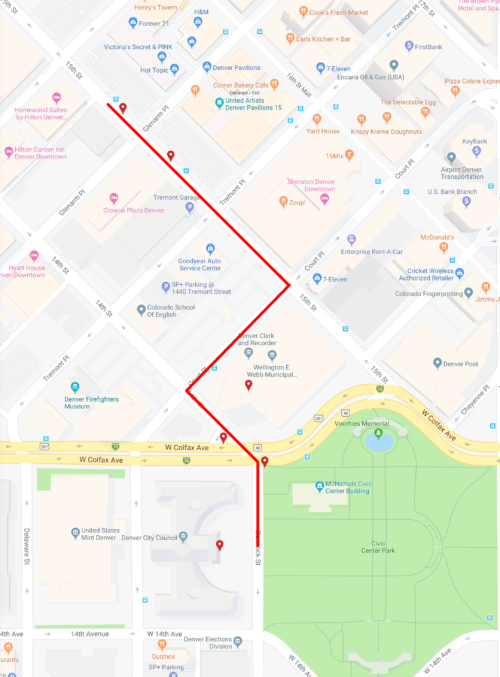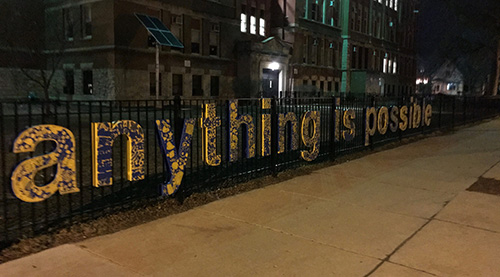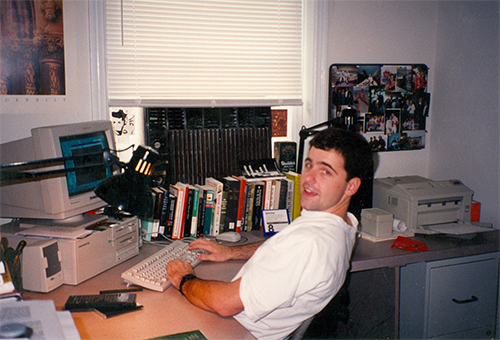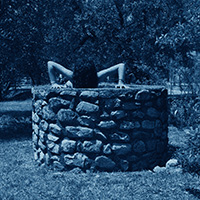What I found digging through 41 years of LEGO bricks
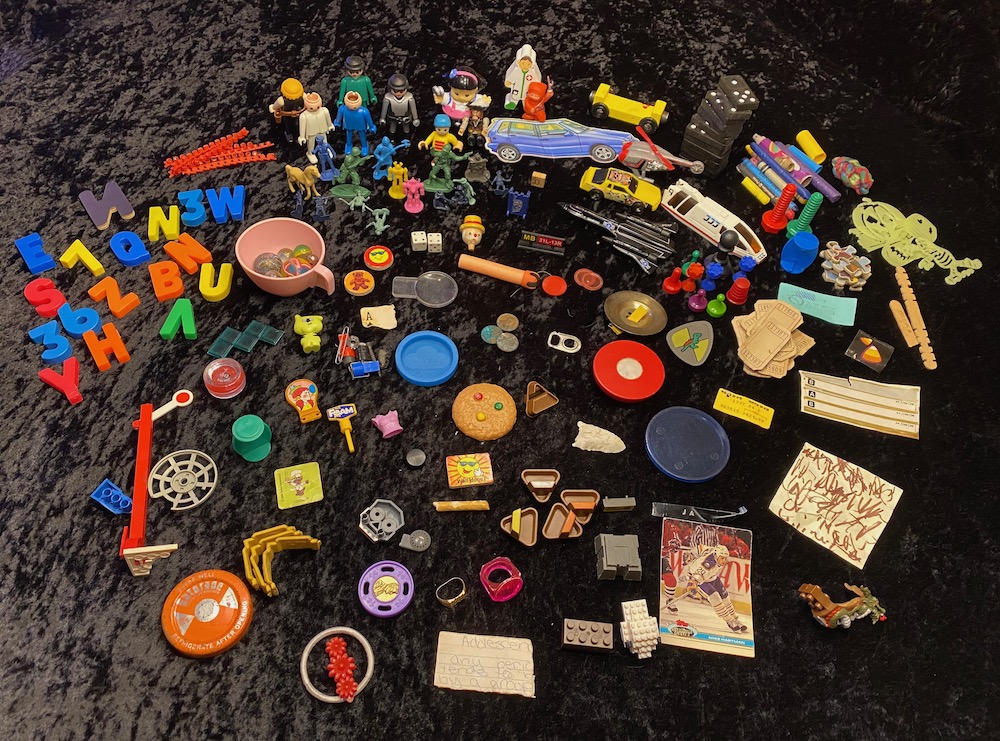
A few months ago I embarked on the Sisyphean task of organizing the LEGO collection in our house. I mean, let’s be truthful: it’s my collection, but my children have historically been the happy recipients of sets that I have ultimately folded into the larger pile of bricks over time. And what a long time it has been collecting, disassembling, and pretty consistently enjoying this big mess of ABS plastic.
My first memory of a LEGO set is the Galaxy Explorer from 1979 (which I rebuilt a few years ago). Since then I’ve never consciously thrown any bricks out, though certainly some have been lost and many have been broken. Using weight as a rough approximation for quantity we have well over 55,000 loose LEGO pieces. (Closer to 100,000 if you count pieces actually residing in built sets and MOCs.)
The actual sorting through all that has been fascinating and therapeutic, equal parts mind-numbingly meditative and joyful. But perhaps the most interesting part of this whole process has been sifting out all the junk in the bins that is not LEGO. And there was a lot of it, specifically 8.325 lbs of accumulated detritus of my youth (with some pieces from my kids’ younger days too). Sieving through it was a kind of autobiographical archaeology, a forensics of youthful amusement.
Inspired by Amsterdam’s dredging of a few canals to install a new subway line where they uncovered and displayed centuries of things from everyday life, I thought I’d lay out a small selection of the non-LEGO trove here. It’s an incomplete picture of how I grew up, but a picture just the same.
- metal Gatorade cap from when it was sold in glass bottles
- Native American arrowhead from a felt display box I had from a trip out west — easily my favorite find
- Ace of Spades, mutilated
- Playmobil figures, many balding as I am
- Little Green Men and various figurines of people shooting things
- Play-Doh container cap
- hair barrette and tie (my sister’s)
- toy rings
- dice
- magnetic refrigerator letters
- spent toy gun caps
- all manner of broken LEGO
- counterfeit LEGO
- game pieces — I think The Dark Tower is in here, loved that game (which is coming back!)
- puzzle pieces
- hockey playing card — of note, I never followed hockey in my youth
- air hockey puck — also of note, we did not own an air hockey table
- lip gloss — possibly mine, probably my sister’s
- marbles and bouncy balls
- pennies with a lot of verdigris
- tickets (likely from Showbiz Pizza)
- a Paris Metro ticket (huh?)
- cassette tape labels — used, naturally!
- dominoes
- note fragment in what I think is my sister’s handwriting: “Adolescn .. any perio … tends to b … by a group”
- embossed label strip — loved those things
- post-it note w/ scrawl — looks like testing a marker
- a Toys ‘R’ Us tag for $29.99 — wonder what that was?
- various stickers
- a thimble
- lotta crayons and writing implements
- Matchbox car and USAF Blackbird
- toy monorail — transit, baby!
- Nerf dart
- a magnet that has pulled together random metal bits
- an Enter key
- a half-gnawed pretzel stick, easily 30+ years old
- part of a in-ear headphone
- other unidentifiable cruft
Not exactly panning for gold, but there’s definitely a Toy Story-esque nostalgia at play. Literally play, which is the only consistent throughline with all this junk. My youth was certainly filled with electronic gadgets, video games, and computers — but none (or very few) of those have lasted. What remains in this re-assambled time capsule are the simpler items, perhaps the best items. A collection of fragments shored against, if not ruin, then the ruinous loss of innocence. I’m not throwing any of this away.
Hair of the dog: some notes on movie-watching during the pandemic
You know how a vaccine is really just a little bit of the same thing that makes you sick in the service of building your defenses against the thing? OK, good.
There are lots of people seeking respite from the real world this crazy year from TV and movies that take our minds off the horror of the virus, racial inequity, economic tumult, and climate change-fueled catastrophe. But an article from a peer-reviewed journal I stumbled upon a few months back — Pandemic Practice: Horror Fans and Morbidly Curious Individuals Are More Psychologically Resilient During the COVID-19 Pandemic — makes the argument that fictional horror may actually be psychologically useful during this time, if not palliative then at least preventative.
I surely don’t need scientific rationale to watch a horror movie but, as it happens, my intake has increased noticeably since the earliest days of COVID-19. Whether that’s lack of travel or much of anything to do outside the house or some deep-seated need to build resilience as the article discusses, who knows? But I’ve been sharing short reviews with friends since May and thought you might like them too. (Mostly movies and television series with a few books, comics, and video games thrown in.)
78/52 is a documentary about a single scene in a single movie, Psycho‘s showertime. Sometimes horror changes the cultural imagination permanently.
Sea Fever is your standard trapped-in-a-confined-vessel-with-a-horrible-infection feature. Except with Irish fishermen and a pretty great, f***-your-superstitions female lead scientist. There’s an environmental message that wants to get out. Never quite does, but the nasties do.
A Dark Song is an excellent, weird flick about an arduous occult ritual. Two people locked in a house for months. Excellent performances. What I thought was a somewhat cheesy tableau at the end actually continues to haunt me.
Carriers ages pretty well. Post-viral outbreak. Chris Pines early in his career. Not stupendous, but super on-point.
Related, I may be late to this, but Reelgood (app and website) is changing my life. Integrated across all video services, it’s a log of what you want to see and what you have seen.
Monster Party was a delightfully random find. Premise: upscale home dinner party for recovering addicts. But their addiction is gruesome. Subplot: three teenagers hired as party waitstaff who are really thieves intending to burgle the place. Tight film, gory kills, and there’s also a sub-subplot that had me wondering how it fit the whole time.
Wow, Bloodsucking Freaks. Ever seen A Serbian Film? If not, don’t, but if you have, this film exists in the same universe of WTF. Grindhouse sleaze at its best. No idea how this was ever released back in the day. Premise: Theater of the Macabre achieves dramatic realism by doing for the stage what snuff films do for celluloid. Also: every woman in this film is naked the entire time.
As documentaries go, To Hell and Back: The Kane Hodder Story, was pretty good. Hodder wasn’t the original Jason, but he was the iconic Jason. His story is interesting, especially the part about setting himself on fire accidentally and suffering far more than he should have recovering from it. (There’s also a Tom Savini documentary out. I had no idea his connection to Pittsburgh and the original Night of the Living Dead!)
Ever watch a movie you’re pretty sure you have seen before and even when it’s over you’re not sure if you did? Well that was me with Absentia. And maybe that’s the point of the movie itself. Premise: husband goes missing and is declared officially dead after seven years by his wife. You’ll never guess what happens next. Mike Flanagan directs and you can see the beginnings of the creepy-as-shit blocking he used in The Haunting of Hill House. (If you have not seen that remake, you should ignore all the other recommendations here right now and go watch it.)
A guilty pleasure. I love The Last Drive-In with Joe Bob Briggs. It’s a double-feature every Friday night while the season lasts (also on demand of course), though the live part of it makes social media actually fun. Joe Bob provides commentary every 20 minutes or so. He’s a redneck, he’s wickedly smart, and he loves horror. Diverse selection of films including many whose covers I admired in the VHS rental shop growing up but never actually watched.
There’s a show on the Travel Channel called Portals to Hell because … demons have wanderlust? I would not know this except that the show was profiling a house near me called The Croke-Patterson Mansion. Absolutely standard — no, sub-standard — “reality” ghost-hunting crap. And yet, having a neighborhood portal to hell is super convenient. (The real horror of this was the live Twitter feed during the show. An online wannabe parapsychologist convention, basically.)
More environmental horror, Underwater is a less hopeful version of the Abyss with better effects. 7 miles underwater with no zombies per se, but lots of things that will kill you. Like, being 7 miles underwater. First on-camera death is pretty great.
Hard to watch (at least for a parent of teenagers), The Dirties is whatever the found footage genre has grown into about two bullied high schoolers who make a documentary about being bullied and then decide to do something about the bullies. Not horror at all. Have we decided that Troubling is a genre unto itself?
The Apostle is like The Village with no twist ending or The VVitch without Black Phillip. But it does have a pagan vegetal sorceress. Welsh horror, folks. You heard it here first.
Rise of the Gargoyles is a terrible (TV) movie. I was legit surprised at one of the kills. Still awful. Worth watching. But it’s bad.
A few weeks back I watched the entire Resident Evil franchise. The first one is the best, in my opinion. It aged less poorly than many of its more recent sequels. Gimme an undead flick or a creature feature any day but not at the same time. I do like the idea of yoking together zombies and sci-fi elements. If you do too, I highly recommend the game Dead Space. Essentially, a first person what if Resident Evil but more Event Horizon-y. Playing this with my kids when they were way too young is simultaneously one of my lowest moments as a parent and some of their self-admitted fondest memories.
Blumhouse’s newest re-imagining of the Universal Classic Monster back catalog, The Invisible Man, is really quite good. Most disturbing emotional/domestic abuse film I have seen since 10 Cloverfield Lane. Especially relevant given the truly horrific scenario we’re in with the lockdown-driven rise in home abuse. More sci-fi than the original, still super creepy. Basically the apotheosis of Leigh Whannell’s line from Insidious: “It’s not the house that’s haunted.”
Blood Quantum is Native American horror, something I do not think I have ever seen — at least not done from an indigenous perspective. Awesome plot point: in a reversal of the disease-based genocide inflicted by the European conquest of the New World, Native Americans are immune to whatever has turned the rest of the world into zombies. They are not, however, immune to being torn apart by them. So American Indian reservations become fortified sanctuaries against the onslaught. Amazing kills, amazing film — especially in a pandemic.
Fantasy Island coulda been great, but it wasn’t. My youth was shaped in part by the original Fantasy Island (and its Saturday night double-feature The Love Boat — also a great target for a horror re-do, come to think of it). Rare that Blum swings and misses, but this one was so convoluted and Michael Peña so hard to accept as a bad guy, that it just didn’t gel. Live your fantasies, pay the price is a great construct though. Can we get a do-over?
Took a while, but I finally watched Mandy. This is just a stunningly beautiful film. Scandinavian death metal liner note art come to life. But as a revenge flick it is just so-so. Nic Cage is of course an exceptional rage-filled lunatic and the cult members are suitably weird. I Spit On Your Grave wins by the landslide in this particular genre though.
What did we get from Get Out besides a phenomenal film? We got this great documentary: Horror Noire: A History of Black Horror. A mix of scholarly and first-person accounts from actors and crew, I learned a ton. Like so much horror, the positioning of of black characters in film through time maps to larger social forces: black as the scary Other, black as disposable, black as retribution for the sins of white. Get Out looms large, but so does Candyman. Lots of great stuff I had never seen too, Blacula in particular and this one …
The Girl With All The Gifts is basically the game The Last of Us (if you’re familiar) with great acting performances. Fungus-based infection turns people vicious and feral (but not, I think, undead) and ultimately into compost for spores to grow pods. Super creepy wide shots of the infected when they are not feasting — not ambling around Walking Dead-style, just standing motionless. Glenn Close is fantastic as is the young female African-American (British?) lead Sennia Nanua. She’s infected but second-generation so basically normal, unless she isn’t fed. But she’s treated like an animal (see documentary, above). The section on how the second generation came to be is unexpectedly nasty.
I had never seen The Exorcist III all the way through. Glad I did, though the story of the Exorcist sequels is a sad commentary on studio idiocy. This movie originally didn’t even have an exorcism and probably would have been better for it. I’m still trying to sort out how exactly this film is connected to the first. Zero connection to the second. But it has George C. Scott and Ed Flanders whose on-screen chemistry is awesome. Plus, as in The Changeling, Scott always seems like he’s on the verge of just being a complete asshole. Which, I suppose, is George C. Scott. Works here. Bonus: this movie contains what was voted somewhere the best jump scare in horror. I don’t disagree; it’s all about the setup. Will let you find it for yourselves.
Back to documentaries, Scream, Queen! My Nightmare on Elm Street is the story of Mark Patton, lead from the second Nightmare, Freddy’s Revenge. The back story on any horror as iconic as this series is great, but this documentary is basically one man’s reply to his portrayal in another documentary, Never Sleep Again: The Elm Street Legacy, itself wonderful. The problem? The screenwriter swears that the script was not intended to be homerotic or to create the first ever male scream queen. The lead, Patton, was a closeted gay man who simply played the part and ended up creating what many consider the gayest horror film ever. (The director seems like a dolt oblivious to any of this.) This was right as the AIDS crisis was shattering America and Hollywood padlocked closets closed. It seems to have ruined Patton’s career. He’s still pissed about it and ultimately confronts the screenwriter.
I’m pretty schooled in the weird Italian sub-genre of cannibal horror. I’ve seen Cannibal Ferox and Eaten Alive and I was the only person in the theater for the premiere of Eli Roth’s love letter to the genre The Green Inferno. But somehow I had never seen the granddaddy, Cannibal Holocaust. I vividly remember the bloody impalement cover of this VHS rental. Every Friday night we’d venture to the video store I’d pass it wondering how they pulled it off. (Turns out, that was a real actress. I mean, wow.) This is a very good film, way ahead of its time. Story within a story, found footage, stomach-churning gore. Yes it has real killings of animals — one is too many, but there are lots — and yes it is horrific in every way. But it’s better than anything that came after it, including Roth’s.
Not a film, but if anyone is into horror comics (showing my age here, but I loved Tales from the Crypt), there’s a new one called Rogue Planet. Space horror, naturally, but pretty fresh. Example: the journey to the rogue planet has crew in hibernation (normal), but a subset of them are periodically awakened by the ship’s AI and used as unconscious, zombie-like drones to do work on the ship before they are returned to sleep and another set of crew are awakened to be human space Roombas. Art is 💯.
Mayhem is a fun movie. Office Space as berserker rage horror-comedy. Steven Yeun, who you may have last seen getting his brains (and eyeball) bashed out on The Walking Dead, is a great pissed-off middle-management lead. Pay attention to the scene by the cubicles. That guy and girl humping like dogs are actually having sex. Why? Because they are local extras and this was filmed in Belgrade. Serbia, man. /shakes head
Re-Animator is one of my favorite horror movies of all time. Probably watch it once a year. But it had been a long time since I watched its immediate sequel, Bride of Re-Animator. Not a bad film at all — quite entertaining, really — but it reminded me that in attempting to capitalize on what came before sequels only ever succeed doing one of two things: 1) go in a completely different direction (e.g. A New Hope → Empire Strikes Back) or copy the first so slavishly that it is essentially the same film (e.g, A New Hope → The Force Awakens). Just don’t get caught in the middle, a celluloid Uncanny Valley kinda, which is precisely where Bride lives. I would have been happy with only reanimated human corpses. No need for weird animal appendage beasties. (And yet, the re-animated head of Dr. Carl Hill with grafted bat wings: A+ for ridiculousness.) Also, some great lines: “TISSUE REJECTION!” and “West, you stupid biped!”
Earlier I mentioned I Spit On Your Grave, but I didn’t realize that a direct sequel called I Spit On Your Grave: Deja Vu — from the original director with the original actress — had been released last year. It tells the story of a woman horribly violated long ago whose vigilantism has made her a minor celebrity in a culture of male perversion that seems not to have evolved one iota in 40 years. In the first film all the blame sits squarely on the redneck rapists. Here it is that but also a much broader swath of society, directly or complicity. This film’s violence can’t possibly be as difficult to watch as the extended rape scenes were to audiences in 1978, but it should be. And maybe that’s the point. #MeToo shouldn’t cause deja vu.
If you like anthology horror with nested narrative frames and lots of 80s video rental store nostalgia then Scare Package is for you. It’s a bit all over the place with wildly different story quality but good for snack-sized, disjointed viewing. I may have thought that Scream, Shaun of the Dead, and What We Do In The Shadows had exhausted the sub-genre of making fun of horror tropes, but I thought wrong. The segment that’s an obvious gooey homage to Troma is my favorite, but the final story’s machete-wielding killer and victim on treadmills as objects of scientific study is pretty hilarious.
I highly recommend Ready or Not. Funny horror but not a comedy, a gothic mystery but the murder hasn’t happened yet. Great performances, lovely gore, and wow is aging Andie McDowell creepy. This should be required viewing the night before anyone gets married.
The Dead Center is a film I heard about on the year-end wrap-up for the Horror Movie Podcast. It’s well-acted and fairly scary, but what I liked most was the premise. Mangled up dude comes into the ER, dies, and is zipped up off to the morgue. Wakes up, finds a gown and an open hospital bed, and then the movie happens. He’s not right, of course. Worth a watch.
I love Octavia Spencer and she didn’t let me down in Ma. Apparently she wasn’t the first choice for lead in this film, but man was she creepy. The flashback backstory is just enough to flesh out her character. And I could totally see myself falling into her trap like the teens in this movie do. Total recommend.
Sweetheart and Sorority Row: Any movies where the first death is by coral or which involve Carrie Fisher with a shotgun (Blues Brothers!) start off with an A on my grading scale.
The Beach House is a bleak, beautiful winner. Small cast, well-acted, eerie if not terrifying. The visual aesthetic may be the first time I think I see Ari Aster’s vibe in another director’s work. Also reminded me of some of Eli Roth’s non-Hostel films where the first half might as well be a good, normal-ish drama — and then it all falls to hell. Marine biochemist as final girl? Sign me up.
Turns out I had seen The Guest before, but I did not realize it until the very last (unsettling) shot. Must be good if that’s what stuck with me. It’s really about the family trauma of the Iraq/Afganistan wars — a thriller with a definite horror vibe, especially the final set-piece. If you’re suspicious of houseguests in general, you’ll probably like this.
Would you believe I had never seen Halloween III? I remember loving the VHS cover art, but that it was critically panned mostly because it had nothing to do with Michael Myers. (But he is in it briefly! Also I swear I heard a slowed-down version of the original Halloween theme, which would make sense since Carpenter scored it.) It’s a really good flick. Tom Atkins (the mean dad from the Creepshow frame story) is excellent and Dan O’Herlihy (the CEO from Robocop, I think) is perfect in his role. Great ending. Still don’t know what “Season of the Witch” means in the title. More like Leprechaun meets the commercial critique that became They Live. I think I would have dug the idea for the Halloween series being a totally different film each entry, but that didn’t happen. It’s what we have Trick R Treat for, if they’d ever make another one.
The Wretched is actually about a witch. In addition to being gross to look at and not at all nice, she also has the power of making people forget things, which is why this is a movie you gotta pay attention to. Truly excellent ending. It’s Smart Horror™. Is this a trend?
Need less high-minded, not even passably well-made horror? Blood Feast 2: All U Can Eat is the movie for you. The original Blood Feast was made over 40 years ago and is interesting for how radical its gore was at the time. Premise: caterer falls under the spell of an Egyptian artifact and goes full cannibal chef. The sequel is exactly the same, but a thousand times worse. And by worse I mean absolutely gratuitous boobs, ridiculous gore, a bizarrely recurring sample from an Orbital tune, and masturbation into a creme brûlée. This is a good film to watch after smoking a lawn bag full of weed, I’d wager.
To those of us with aging parents or grandparents the premise of Relic might cut a little close. It’s about an elderly mom/grandma suffering from dementia. Or is it demonic possession? (These pathologies are not etymologically related; I looked it up. But would have been cool.) It’s disturbing in the same way Hereditary proposes a kind of inherited evil. This film is not to be confused with the so-90’s film The Relic, which was shot at Chicago’s Field Museum, also worth a watch.
In The Darkness the central character is an autistic child with a special way of seeing and relating to something really bad he picked up in the Grand Canyon. It’s a rip-off of Poltergeist mostly but worth mentioning because Kevin Bacon is in it. Setting aside his iconic, pattern-setting death in the original Friday the 13th (just had sex + laying in bed smoking a joint = you about to die horribly) there’s an Ethan Hawke-in-Sinister vibe here. Talented, established actor coming to horror late in his/her career. Paul Reiser is also in this film, for some reason.
As background listening/watching I’ve enjoyed the amateur — but very smart — “Anatomy of a Franchise” series on YouTube. The narrator deconstructs six horror franchises focusing mostly on the evolution of their stories as a series. You’d think the pattern would be a great film (maybe two) followed by dreck, but that isn’t always the case. And even when it is, the narrator explains why. I learned things.
Lastly, if you like experimental horror fiction I was recently reminded of House of Leaves, which I read years ago, by the map my Roomba drew of the second floor of my house. See, the book is about a guy trapped in a house that seemingly never ends, a kind of architectural Tardis which is also a book. The creepiness comes mostly from the non-Euclidean geometry of the rooms (as in, for instance, doors where they physically could not exist — sorta the way Kubrick built The Overlook interiors to make no contiguous sense — watch the documentary Room 237 if you want more on that). Anyhoo, here’s the map that shows the other dimensions the Roomba burrowed into in my house.
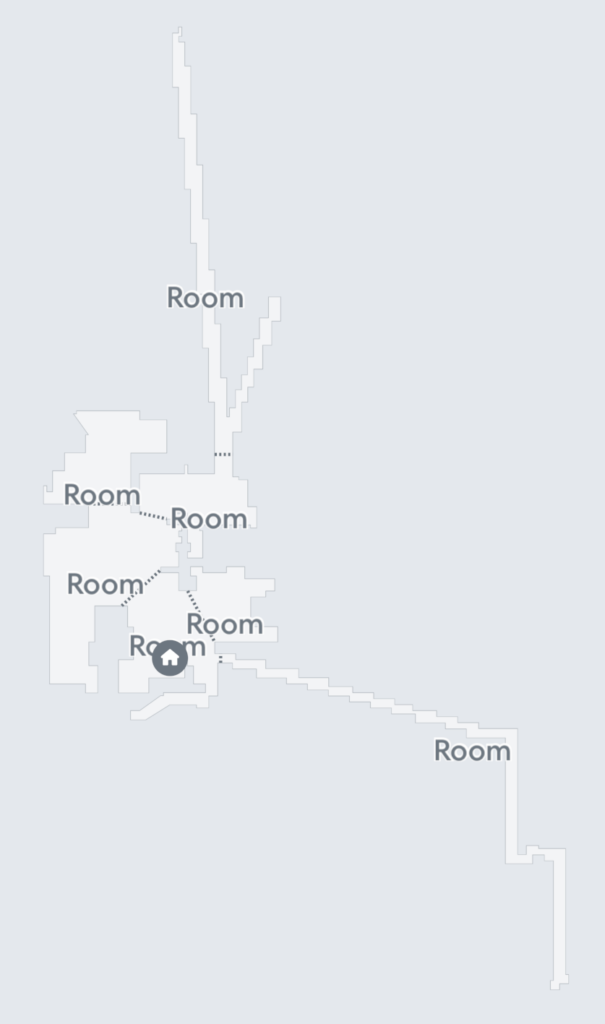
Primal Screen is a weird multiple person “memoir” about the creepiness of ventriloquist dolls. It’s a very personal attempt at figuring out what makes dolls so disturbing.
The Siren – A modern retelling of the Greek myth. That it takes place on a lake somehow makes the idea of a seductive sea creature scarier to me. The protagonist is mute, which makes for some very emotive acting. (Probably some deeper meaning I’m not grasping too, since the sailors in the original story made themselves temporarily deaf to thwart the sirens.) Worth a watch, er, listen.
If you’re in the mood for an epically long documentary, have a look at In Search of Darkness: A Journey into Iconic 80’s Horror. It covers basically everything about 80s horror from the franchises to some films I had never heard of, sound design to cover art, nudity to final girl feminism. It’s comprehensive, but there’s basically zero editing. The doc jumps from topic to topic scattershot. Still, I learned stuff. Makes great background watching.
Talk about a movie of/for the moment, Host is what happens when a Zoom videoconference goes to hell. I had low expectations, figuring it would be a knockoff of Unfriended, but it was actually really novel in places. I suppose you have to know Zoom’s quirks to fully get it. There’s one feature of Zoom — and how it could be twisted in the film — that was supposedly the inspiration for the whole thing.
Watched this a while back, but was reminded of it in the doc above. Society is one perverse movie. From 1989, I’m not even sure it could get made today. Suffice to say that this deeply anti-classist flick culminates in one of the nastiest endings I’ve ever seen. It’s called The Shunting and it’s basically what an orgy orchestrated by H.R. Giger would look like.
We Summon The Darkness is an ode to 80’s metalhead culture and the conservative forces who thought we were all satanists. But the real reason I watched it is that I have been a sucker for anything Alexandra Daddario is in since the Texas Chainsaw remake. I’m surprised there have not been more films that play with the Tipper Gore mania around pentagrams and dove-decapitation of that time. This one kinda nails the tone as I recall it.
I mean, a horror movie about a vinyl record that kills you when you listen to it? TAKE MY MONEY. Deadwax is a series of super-short “episodes” totaling less than two hours. (Maybe they were going for tracks-on-a-record thing?) Given that audiophiles and vinyl collectors are somewhat insane to begin with, this is fertile subject matter. I particularly liked the subplot involving Lac beetles, the creepy-crawlies that make natural shellac, a rare early material used to make records.
The Rental falls into a category I am now thinking of as Sharing Economy Horror. Clearly inspired by stories of creepo Airbnb owners, this is the tale of two intertwined couples on a weekend getaway that ends disastrously. Really the protagonists are the horrible people in this film, though there is of course more to it. Incredible sound design.
Cold Prey, because sometimes you just need a bunch of horny young adults trapped by a pickaxe-wielding killer — and nothing more. This film is standard fare in every way, except that it’s Norwegian. (I switched the overdubbing on briefly, ruining the tone of the film completely. Recommend subtitles.)
1BR explores the fine line between homeowner associations and death cults. Sounds funny, but it’s played completely straight, and it works. Final shot is wonderful and frightening.
This one kinda messed me up. Swallow is about pica, the compulsion to eat dangerous things. I’m not sure why reviewers call it horror, except that this is exactly what I felt watching the lead do the swallowing. It’s aesthetically beautiful, deeply unsettling, and superbly edited.
I had high hopes for the horror comedy Extra Ordinary, but maybe it was too British for my taste. Some good moments — homage to The Exorcist poster art, strategy for saving the virgin from sacrifice — but I did not find myself LOL’ing like I did during What We Do In The Shadows.
Color Out Of Space feels like a companion to Mandy at least from a visual saturation and Crazy Nic Cage perspective. I don’t know the original Lovecraft story so I can’t compare, but it had it’s moments for sure, e.g. horribly mangled, still-writhing devil alpacas. I like the idea of an evil that is just a color, but I could not unhear “Colorspace Error” from improperly rendered PDF files.
I had seen Life before but did not realize it until the very last scene (that’s twice now), which is easily the most unsettling. Great acting lineup — though if you are in it for Ryan Reynolds he’s not really the lead. It’s maybe a good reminder about the resilience/persistence of life in these dark times, but in a most horrible way. If you like spaceship corridors and killer aliens, dial this up.
Gretel & Hansel is a gorgeous film. Sophia Lillis of IT fame is wonderful too. Not pee-your-pants scary, but the effects are great and the witch is suitably witchy. Worth a watch if only to ask yourself how on earth Grimm’s tales ever were thought appropriate for children.
Bulbbul is Bollywood horror because of course that exists. This is a beautiful film that absolutely does not follow western horror conventions. More of this, please.
I missed Eden Lake when it came out, but I’m sorta glad I did because I’m not sure I would have understood it in the same way if I saw it in 2008. Basically UK torture porn with some nasty classism as scaffolding. I was troubled by this flick since the overall message, if one was meant, is exactly the bring-back-the-good-old-days of Merry England delusion that powered the Brexit vote 8 years later.
Devil’s Gate was one ambitious take on aliens and crazy rural folk. Enjoyed it as I repeatedly thought I wasn’t enjoying it. Two points of note: 1) I think this is the first time I have seen Jonathan Frakes in anything since Star Trek: TNG. He is also borderline obese. 2) The female lead is quite good, but I did not realize until I looked it up that she is not, in fact, Naomi Watts.
Deep Blue Sea 2 – This is an atrocious movie. Not a remake of the Renny Harlin goofiness (which I loved), but almost the exact same movie. Do not view.
Deep Blue Sea 3 – Also atrocious, with a side of white savior. Thanks Shark Week! Also a do not view.
The Babysitter legit made me laugh and cheer throughout. Its sequel, The Babysitter: Killer Queen, was not quite as funny and did not have the same shock value, but I recommend a watch. The dialogue is rapid and witty. Ken Marino as the dad was hilarious. (Alas Leslie Bibb as the mom was underused. A shame since she was A+ in Hell Baby.)
What a unique film is Belzebuth. This take on the second third coming of the Antichrist is equal parts disturbing, scary, and fresh. Plus, it’s as much a Mexican film as an American one. The dialog just switches back and forth between languages depending what a person would naturally speak. Understated but powerful commentary on border crossings and imperial evil, too.
I loved the horror-thriller The Perfection. Twist after twist after twist. Features Allison Williams from Get Out who I am now convinced is a straight-faced maestra. I’d hate to play her in a game of poker. You can almost feel the specter of Harvey Weinstein in this story (irony: a Miramax film). Best line in a long time: “There are maggots in my puke”. Highly recommend!
I should have known that House of the Witch was a horrible movie, given that it was made for TV. Production values and trope/trick rehashing are laughable. Thesis: Amazon Prime’s cellar-grade films are shittier than Netflix’s stinkers.
Usually it’s a bad idea to watch a movie based on its title alone, but The Cleaning Lady did not disappoint. Simple, tight, and not at all what I was expecting. Note: a sub-plot around child abuse, though the worst of it is not depicted, is stomach-churning. Ending was a bit head-scratching.
Sidenote: I rarely read horror, but I thought I would give The Living Dead by George Romero a shot. It was unfinished at his death so completed by a collaborator. Not as jaunty as Brooks’ World War Z novel (which I loved more than the film that I liked a lot), but I am reminded of how different — and lingering — the narrative description of terror can be from when I tore through the Stephen King catalog as a high schooler. I have not finished the book yet and some reviews note that it’s not what it seems like at first, so …
The Binding (Il legame) – Southern Italian curse. Lots of creepy old Italian women. The plot is basically my extended family. I wanted this to be great. It was not great. Consider it watched so you don’t have to. But happy to scare you with tales of my crazy ancestors.
American Murder: The Family Next Door – Documentary on the Colorado dad who murdered his wife, two daughters, and unborn child. What I found engaging was that it was neither a re-enactment nor just talking head experts. Most of the footage here is primary source: social media family videos and personal videos (the wife, Shanann, recorded herself a lot), police body cam video, and contemporaneous news footage. If you believe in the horror of the mundane, this is it. And sadly true, of course.
The Walking Dead: Season 10 Finale – Not sure how many of you have followed this show through the years, but this season — which I found quite a bit more original than previous — was cut off by the pandemic right before the final episode, an unintentional cliffhanger. Possibly unintentionally climactic too. Might have flowed better without building expectations all these months. But it was still great. And the actual ending has a fantastic cliff scene. No hanging.
The Strangers: Prey at Night – I had seen this flick a while ago, but I must have forgotten about it the moment I watched it. Which, well, there’s your review. Not nearly as simple or creepy as the first one. And yet I do have a soft spot for the home invasion genre, so what if the homes are a trailer park. You really can’t beat the answer in the first film to “Why are you doing this to us?” (“Because you were home”), though this one tries: “Why not?” Completely motiveless murder (not unlike Eden Lake).
The Haunting of Bly Manor – I put some time into this follow-up to The Haunting of Hill House which is still the best horror I have seen in the last few years. Bly Manor is not in any way connected to Hill House except that some cast members return in new roles. But it’s Mike Flanagan so there’s always something lurking out-of-frame. Much deeper, more philosophical, and frankly less scary. But worth the investment of time. It’s a great remix of The Turn of the Screw. Plus setting a show in the 1980’s amidst the poshness of an English country estate is itself weirdly unsettling. Recommend.
Scare Me – Very interesting film. Just two people (then three, then two again) telling each other ghost stories. Like, that’s really all there is. Except that there’s more, ultimately. Creative, funny at times, and super tight. Highly recommend. (If you go looking for this, make sure you grab the film by Josh Ruben. There’s another horror film with the same name released this year.)
The Cleansing Hour – Fair to say there’s an entire horror sub-genre now where fake exorcists (or ghost-hunters) do their exploitative thing until — uh oh! — they stumble upon real evil. This is that. Kind of a good plot too. Very uneven though. It’s like some parts of the film had talented actors and a decent budget and other parts did not. Might have worked better not played straight. I mean, if you’re gonna make your audience chuckle you might as well intend to do it.
Walking the networks of Denver
Cross-posted at Medium.
Years ago, when I was just moving into the world of urban technology, I stumbled upon the urban “walkshop” format developed by Adam Greenfield and Nurri Kim (refined and expanded by Mayo Nissen). These walking tours were collaborative, lightly-structured investigations of surveillance and communications machinery sprinkled throughout various cities. Though these walkshops pre-dated what some now call the Internet of Things, there was plenty to look at, especially as cameras trained on the public way proliferated.
Sometime later I helped curate the City of Big Data exhibit at the Chicago Architecture Foundation. Being primarily a touring organization, CAF staged a few walking explorations of the collection, transport, and effects of data throughout the city. I was not involved in the development of this tour, though the idea of an “architecture” tour that took as its subject the hiding-in-plain sight constellation of objects, poles, wires, sensors, and cameras that shape a city’s daily life was never far from my mind.
And so it was that yesterday I led a tour of about 20 people during the Denver Architecture Foundation’s Doors Open Denver, our city’s annual two-day invitation to explore architecture and spaces normally off-limits to the general public. Called Networks of Denver: Evolution of a Smart City, the tour was obviously an outgrowth of my work with CityFi. Less obvious – at least to the folks who took the tour, I hope – is that I still feel like a newcomer to Denver; my naïveté about how things work here still feels like license to be aggressively curious. So we set out for 75 minutes to find evidence of digital technology in our physical, urban surroundings.
Why do this? Who cares about unseen boxes and invisible wireless fields? The easy answer to the second question is: a surprising number of folks, with varied backgrounds, most of whom had participated in other, more traditional architecture tours during the weekend. (I suspect we could have filled another tour had I offered it twice.)
Back to the why: my sense is that as more and more urban technology crowds onto our streets it has become increasingly difficult to miss. A few years ago you might never have noticed distributed cellular antennas festooning decaying rooftop water tanks, but today the streetscape is cluttered with many more devices much closer to the sidewalk and roadway. Add to that an increasing awareness amongst the general public that technology is changing the way we use cities: red light cameras flash in our faces leaving us to wonder if we’re driving the car it caught; dockless scooters zip us around then lay in ugly piles on curbs; pay-by-cell options mean never having to run out to feed the meter.
This networked machinery shapes our urban lives. Like brick-and-mortar architecture, the shaping is subtle, often unrealized consciously. Maybe we were given more time to transit the crosswalk because an elderly man was slowly crossing opposite us and a pedestrian video analytics system gave him more time to make it. Maybe you don’t want to picnic in the park because you know the LTE connection there is spotty. Maybe an environmental sensor whose video array is pointed straight up at the sky has informed your hyperlocal weather app which advises you to jump on the bus rather than walk because it knows your few blocks are about to get a sunshower.
With the able assistance of Emily Silverman and Mike Finochio from the City and County of Denver, we were able to look at some things truly inaccessible to the public, including the inside of a traffic signal control cabinet and the city’s traffic management command center. The latter was especially interesting since it is the main terminus of the information being generated from many of the technologies we saw in the field. These included, but were not limited to:
- traffic signal phase and timing controllers
- signal malfunction monitoring units
- two different models of vehicle-to-infrastructure radios (DSRC)
- pan-tilt-zoom traffic cameras
- parking analytics cameras
- pedestrian video analytics cameras
- video and bluetooth-based queue sensors
- emergency vehicle pre-emption radios
- crosswalk analytics sensors
- LTE-enabled parking meters
- WiFi mesh public safety surveillance cameras (“HALO”)
- pavement boxes (electric + fiber)
- distributed antenna systems for cellular (LTE)
- ambient light sensors on street lights
- public electric, dockless scooters
- public docked and dockless bikes
- surveillance cameras on private property
Our discussion of the potential ways that augmented reality could affect the urban realm, for good and for ill, was greatly aided by a five-year-old art/information installation along 14th Street, one of the main corridors we explored. Called the 14th Street Overlay this project has installed antique-looking optical instruments and QR code-enabled placards along the street that attempt to superimpose historical images in situ. How will we behave on sidewalks when we can call up these images on our own devices registered and overlain seemlessly on the physical world? How will that change our sense of place?
We ended our tour looking at two newer and larger installations: a Verizon 5G pole and an information (er, “transit amenity”) kiosk. The thick, towering 5G pole and the number of them required by Verizon and their competitors to blanket the city have lately been a source of some public concern. There was much discussion about the city’s role in making sure such infrastructure blends in to the built environment, either by combining their radios into existing street furniture or requiring that multiple carriers share a common host.
The kiosk was a bit of a disappointment as it is clearly a giant piece of outdoor advertising first, “amenity” second. The public transit information offered is static (i.e., a schedule rather than real-time tracking) and non-interactive. And yet the unit takes up an enormous amount of space on the sidewalk. Apparently most of the inside of the monolith is empty. Most agreed this was a wasted opportunity to do something truly useful in our public way.
I consider the day a success, as I do the version of the tour I gave to my CU grad student class the evening before. Many of the topics that our exploration prompted were about issues of public versus private control and data (observability versus surveillance), how such instrumented intersections could lead to a real-time urban design, ethical concerns about what happens during the transition phase from unconnected to connected vehicles (“is it wrong to provide information to a subset of motorists?”), and how far the city should go to help the private sector test their wares.
This was only the beginning of the conversation. It’s difficult to unsee all this machinery once you know where it is and what it does. I encourage you to go exploring in your city.
If you’re interested in diving deeper into the world of rarely-noticed technologies that shape our cities, I recommend exploring the work of
Ingrid Burrington, Dan Hill, and, Shannon Mattern (including of course Greenfield and Nissen, linked above).
Our state-spanning urban skyline is not made of steel and glass
Cross-posted at Medium.
CityFi partners John Tolva and Story Bellows frequently find themselves on the frontier of urban change. Their facilitation of major projects often convenes public-private stakeholders, utilizes new models of technology and innovation, and drives policy development, all with the goal of making our cities more livable, vibrant and economically competitive. Currently, this mission extends itself to the western frontier of Colorado. These days, the booming Denver-metropolitan region has largely kicked its historical image as that of a dusty cow town; in fact, two of CityFi’s major Colorado-based projects illustrate the innovative, multi-sector and often regional collaborative momentum this state has built toward creating sustainable, positive change for its diverse communities.
The history of CityFi coincides with the beginning of its relationship with the Denver South Economic Development Partnership (Denver South EDP); it was the project to develop a blueprint for turning the Denver South region — a conglomeration of several small cities driven by its economic hub in the Denver Technological Center — into a 21st Century Innovation District, which was the firm’s first. The Blueprint is a critical component to retrofitting this region — a major economic driver for the state, contributing nearly 20 percent of the state’s economic output — so as to keep pace with the urban changes that Denver is undergoing. Denver South is primarily centered around the major artery of Interstate 25, which runs north-south into the heart of downtown Denver. A new study recently projected that in the next ten years, 70,000 additional people would be coming to the region each day to work, highlighting the critical nature and urgency of determining how infrastructure, local culture and the built environment could be transformed to meet these needs in coming years.
As a result, “the blueprint reinvents the approach to making an effective and attractive suburban landscape by providing a guide for city officials and developers as to how to integrate new technology solutions, approaches to policy and governance, improved land use and cultural change,” Bellows said.
For Denver South EDP, this shift is important to maintaining business vitality in the area, as without addressing these barriers, the region risks losing business to other parts of the city, or even other states. The blueprint also leverages one of the most significant investments made in Denver South in recent decades, that of RTD’s transit infrastructure, including a light rail system, which stretches as far southeast as the City of Lone Tree. CityFi wants to better integrate this asset into the built environment to improve Denver South as a place that can accommodate increased people and their desire to live, work and play within proximity.
CityFi sees the challenge of Denver South as also its greatest opportunity. While Denver South may not have the caché or national intrigue of Denver’s downtown core, CityFi recognizes its fundamental importance as part of Denver’s economic engine, and believes formulating its successful future can inform the efforts of other cities also recognizing the benefit of retrofitting aspects of suburbia to accommodate population growth, mobility patterns and new models of the workplace. In short, CityFi sees opportunity to improve development, asset use, business decision-making and policy in Denver South to not only make the region sustainable, but also to improve the quality of life for those that live and/or work in the area. “Citizens everywhere — not just those in the densest, most active parts of a city — deserve the chance to feel truly invested in and love where they live,” Tolva said.
One of Colorado’s particular strengths, including within the Denver South region, is its propensity toward multi-sector and multi-jurisdictional collaboration. This unique asset is significant when considering the scope of retrofitting suburban regions for the future. Rather than decisions made in siloed vacuums, urban change leaders — from city officials and developers, to business leaders and citizens — can collectively work to shape the development of our cities. “Not only does this approach build capacity, it allows problems to be comprehensively addressed so that the resiliency to weather change is strengthened,” Bellows said. This collaborative approach will help to overcome Denver South’s challenges, including defying the misperception that growth and density leads to a lower quality of life for its citizens. Rather, CityFi seeks to reframe this by educating on how population growth and changes to the built environment will actually provide, not take away from, increased choice and connectivity. CityFi and Denver South EDP believe this will become evident as the blueprint is incorporated into future planning practices, and holds the potential to become a national model for how to approach suburban retrofit that accommodate the needs of both old and new residents and workforce.
CityFi’s other major project with Denver South EDP is the ongoing creation of the Colorado Smart Cities Alliance, which capitalizes on CityFi principles of using innovation and technology to solve the complex urban challenges our cities face. The Alliance — while still nimble and in its early stages — serves as an incubator for Smart City pilot projects, living civic labs, resource and best-practice sharing, and multi-sector and jurisdiction engagement around city challenges that cannot necessarily be addressed through traditional government or private sector avenues.
What is most unique about the Alliance, and what is also evident in the Denver South Blueprint, is the additional leverage that regional collaboration and problem-solving bring to the table. While the Alliance originally began under the auspice of Denver South EDP and the cities it represents, it was quickly realized that this effort would increase in value and return on investment for Colorado citizens if it became a statewide project in which all major cities were engaged. While Colorado cities vary greatly — from small mountain towns, to the Western Slope, to the major cities of the I-25 corridor along the Front Range — what is evident is that each of these cities are facing challenges while adapting to rapidly-changing environments, whether urban, rural or suburban.
As the Alliance unfolds, it will have two main roles: first, to solve city problems where solutions do not currently exist through traditional procurement channels; in essence, as Tolva says, “to loosen the innovation throttle inside of cities, and reduce the risk associated with implementing innovation in government structures.” The other main objective will be for cities to be able to capitalize on the economic development opportunities that arise from the resulting multi-city, cross-sector collaboration. As the Alliance incorporates private sector partners, there is a reciprocal return on investment in being able to test new technologies across a variety of city landscapes to understand the true costs and benefits of their application. CityFi’s role is critical in managing the balance between these public and private participants, while recognizing that both parties are necessary to shape the direction of Smart City solutions and provide a pathway for two-way learning.
As is core to its mission, CityFi advises widening the proverbial doors of the Alliance to involve these cities’ citizens in the process. “Too often in Smart City conversations, there are no citizens present. It’s on us to frame the discovery of city challenges in terms of those they affect — business owners, citizens and workforce. That is ultimately the defining philosophy of CityFi,” Tolva said. “Skepticism about Smart City initiatives arises because they are not centered around the citizen experience.”
CityFi’s excitement around its work with the Alliance is palatable; Bellows and Tolva both acknowledge that while many cities have attempted to pull off a similar structure alone, the Alliance is a national trailblazer in terms of conducting these efforts on a regional or state level. In that spirit, Tolva said, “we are less interested in the jurisdictional boundaries than we are in the experience of these places.”
CityFi’s presence in Colorado continues to grow, and is currently working with Denver Mobility Choice, the City of Aspen, and Panasonic on new urban change projects. The Colorado-based CityFi team has also doubled in the past month with the hiring of a new associate. Look for more updates about CityFi’s Colorado projects in upcoming months.
CityFi
Much as I have enjoyed being a gentleman-of-leisure pack mule, fourth-rate interior decorator, and horrible default parent during the move to Denver, it is time to let you know what I’m up to.
I’ve co-founded a company with some of my favorite former colleagues. It’s called CityFi. If you’ve followed me here over the years you won’t be surprised to learn that we’re in the business of helping towns, cities, and metro regions become better places to live and work — whether that’s working for municipalities, urban design firms, architects, real estate developers, or the myriad of companies today whose products or services stand to improve urban life.
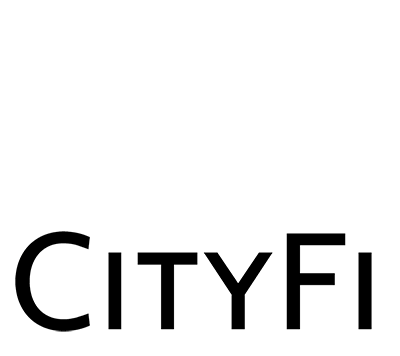
Full post over at Medium, but here’s the announcement part:
The CityFi team is a network of professionals who have implemented policies and projects at senior levels in government, foundations, and the private sector. Our team members have proven records of success delivering sustainable, significant change in the way cities work and the way people experience and participate in their communities.
We foster true partnerships that create value for people, for the environment, and for the economy.
We work with innovative global and local companies to deliver top-flight services that enhance the civic experience without imperiling the public good.
At its core, CityFi believes that great cities come not from monolithic projects but rather emerge from carefully-designed underlying conditions — street grids, equitable housing policies, business-friendly regulation — so that beneficial complexity can grow. This is how our most resilient, productive cities have grown for a very long time. We’d like to keep that growth going.
For more information on CityFi and what we do, visit our website and our Twitter feed.
This is an exciting time to be working at the intersection of technology, policy, and urban design. We’re (thankfully) past the techno-utopianist hype of the first wave of “smart cities”. Turns out the world hasn’t stopped urbanizing since then. Lots to do and couldn’t be more ready to get to doing it.
On Leaving Chicago
My family and I are leaving Chicago. I’d like to explain.
It’s simple: my incredible wife has been given a career opportunity that would be silly to let pass. The details aren’t really important. What is important is that the kids and I would do just about anything to support this woman. She’s on a rocket ship and we’re wired in at mission control.
For those of you who know me, this may come as a bit of a shock. More than a few of the few of you I have delivered this news to in person have expressed that you never thought I would leave Chicago. Well, I never thought I would either. I love this town to my core. I have written about that love over and over, went to work for the City of Chicago to try to make things better, and I’ve helped raise a family here.
But sometimes things change — and you never know what will happen. Back in 2000 when my wife and I were both working in Atlanta — newlywed, post-grad school, the very definition of unencumbered DINKs — unforeseen change also reared up. My wife’s company was being acquired and she was needed in Chicago. Honestly I was a bit worried. Chicago in 2000 was no tech mecca, especially compared to go-go late-90’s Atlanta. I specifically remember a BusinessWeek cover story from that year called “Chicago Blues” about how the town had lost its economic mojo. What, was I going to work for an agribusiness or something?
Obviously we did move and obviously things turned out very positively over the course of the next 16 years. Chicago’s tech bubble burst and then the scene reconstituted itself stronger than ever. I am the happy beneficiary of a move I initially did not want to make.
Oh, right: we’re moving to Denver. It’s gorgeous. It’s thriving. And, while I admit that Denver wasn’t ever on a short short list of cities I’d move to in a heartbeat, after a few visits I have no doubt it’ll be a great place to live.
So much more to say — even more left to do — before we depart this summer. Let’s not be strangers, now or in the future.
Shaping the tools
Pretty honored to be recognized by Newcity as one of Chicago’s “Design 50”. It’s quite a list to be on.
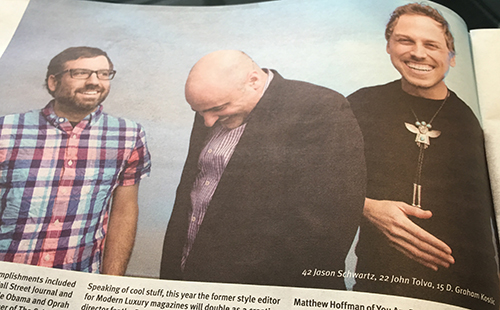
Photo by Joe Mazza
Here’s the accompanying write-up:
Some designers on this list design furniture, some the buildings the furniture goes inside of, and still others the blocks and developments we put those buildings in. John Tolva goes one better with his latest endeavor, designing the algorithms and systems behind the tools of urban planning. The one-time “data czar” for the City of Chicago has moved on to the private sector where he has been applying his data wizardry and impressive computer science chops in the development of urban planning and visualization technology. As Marshall McLuhan said, “We become what we behold. We shape our tools and then our tools shape us.” John Tolva is the man shaping the tools.
Here’s the full list.
I made the list in 2014 too and it contained one of the most unintentionally doleful photos I think anyone has ever taken of me. Glad the photo from this year (above) is the other end of the emotional spectrum.
Thanks, Newcity!
A year underwater
Last year, as Chicago settled into a colorless, lifeless winter freeze, I decided to take up Scuba diving seriously. Maybe it was escapism, envisioning myself floating above tropical reefs, the very opposite of the blizzardscape outside.

Great Barrier Reef, Cairns, Australia
There were other reasons for diving into an expensive hobby I had basically no time for. I suppose I’d finally come to terms with the fact that I would never actually be an astronaut. Diving seemed like a compromise. The sea’s a fairly alien world, as unmapped as the moon, and if you get your buoyancy right diving is about as close to flying (or bouncing around in microgravity) that I was ever going to get.

Poor Knights Islands, Tutukaka, New Zealand
It wasn’t completely out of the blue. I’d maintained a saltwater reef tank for about three years and had a more than beginner’s understanding of the complexity and beauty of marine ecosystems. Part garden, part science fair project, part sea creature death match arena: my reef tank was the gateway drug to Scuba. I was no longer content to sit outside the glass.

Molokini Crater, Maui, Hawaii
I knew going in I wasn’t interested in great depth. Not so fired up about shipwrecks. No desire whatsoever to jump through an ice hole or into mazy caves. I wanted coral reefs with all their bottom-up symbiosis and toxin-spewing brutality, exotic colors and improbable shapes, undulating tentacles and ship-slicing skeletons.
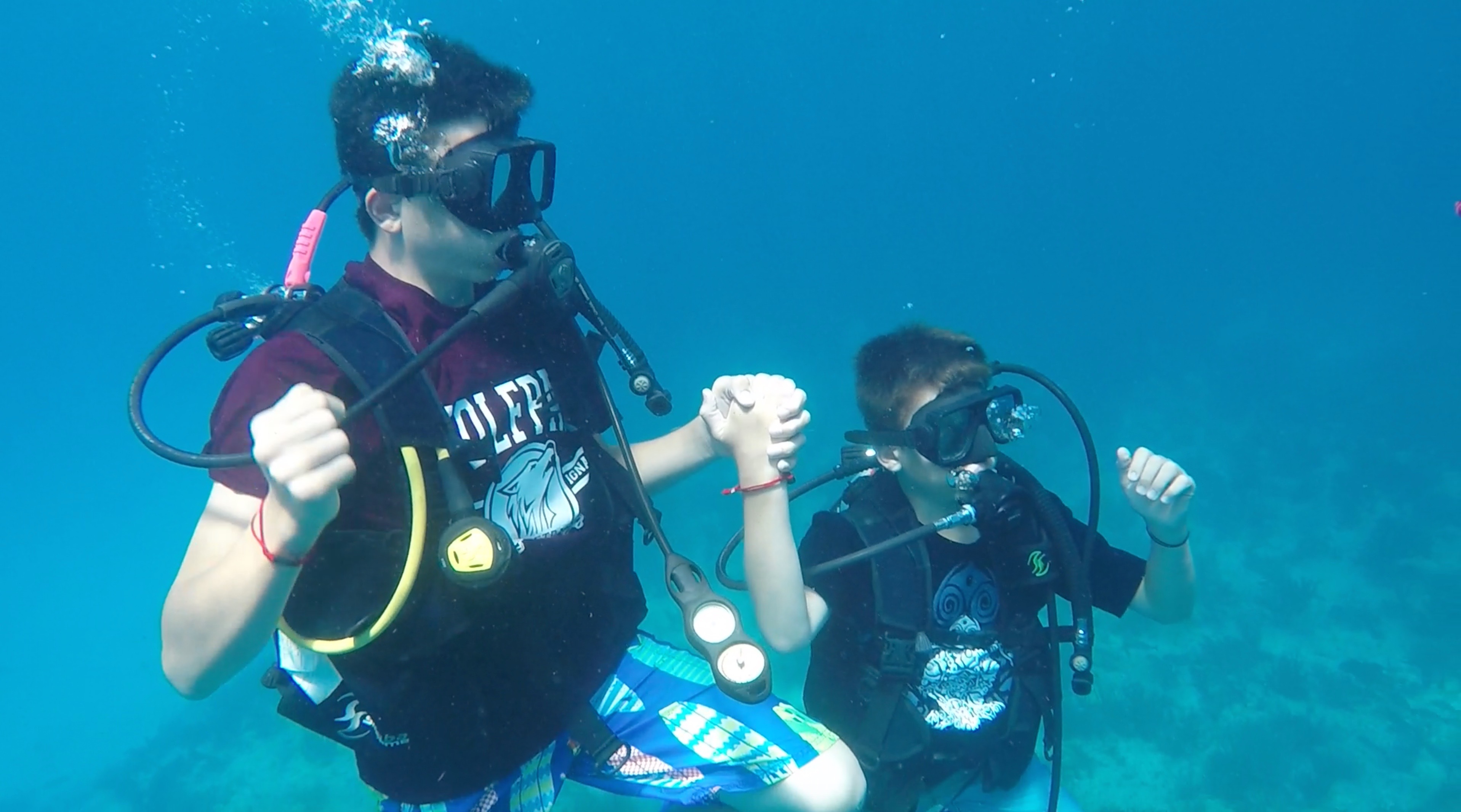
Playa del Carmen, Quintana Roo, Mexico
Through luck, vacation time, and some trips tacked on to work travel I actually got to experience quite a bit this year: a sub-tropical way-stop of the East Australian Current at the tip of northern New Zealand; cliff-clinging life off the Amalfi Coast in Italy; the Crayola box coral gardens off Cozumel, Mexico; the mind-bending diversity of the Great Barrier Reef in Australia; and the playground of endemic species in Hawaii. Even did a wreck dive in the chilly but crystal clear waters (thanks, invasive mussels!) of Lake Michigan. Here’s a map.

The Wells Burt Wreck, 42.0458° N, 87.6180° W, Lake Michigan
There’s no way to make sweeping statements about the health of coral reefs with as (relatively) few dives as I made this year, despite the somewhat globe-spanning locales. But it certainly is true that reefs, like rainforests, are the coal mine canaries of climate change. I have personally wiped out entire ecosystems in my aquarium with two degree temperature changes. The ocean, of course, is far more resilient than a tiny tank, but it is clear that wild reefs themselves are under stress. We’re in only the third coral bleaching event in history and, while I saw some of the world’s best (and healthiest) coral, there was death and decay all around.

Cozumel, Quintana Roo, Mexico
It’s a wonderful world under the waves. Here’s hoping you get a chance to peek under them too sometime.
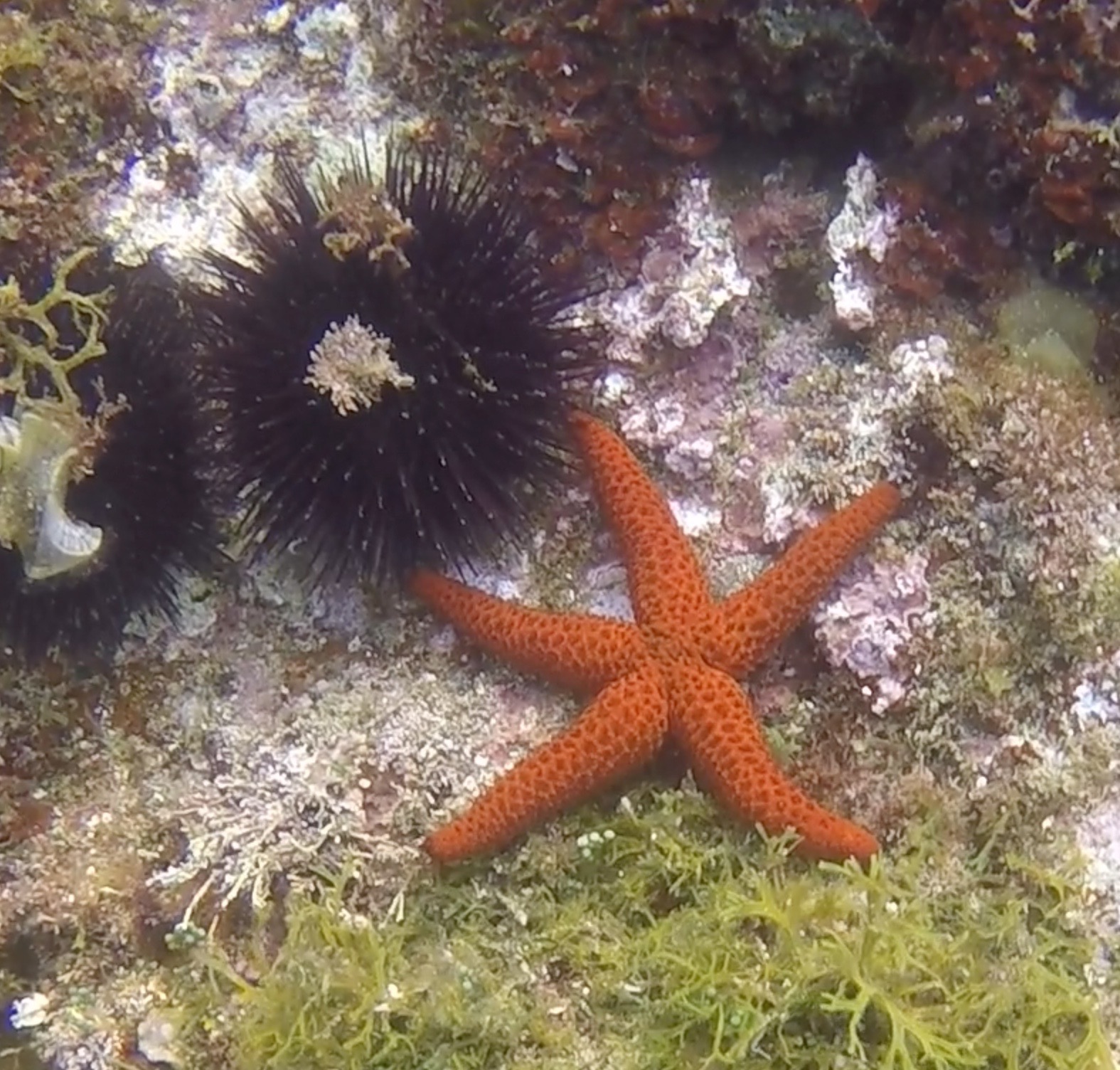
Near Praiano, Amalfi Coast, Italy
(The photos in this post link to larger versions which get you to fuller galleries. And if you’re interested, dive log details are available by clicking the place name in the photo caption.)
Art not ashamed to publish thy disease?
Twenty years ago I wrote a paper about the Internet. Let’s grade it.
1995. AOL, CompuServe, and Prodigy were the on-ramps to the Internet for most people. Geeks and university students surfed around via Telnet, FTP, Gopher and the still-new graphical web browser from the NCSA called Mosaic. Yahoo, Amazon, and Craigslist had just been born; Google was a year away. The Kindle was hard to even imagine.
I toiled in grad school, studying the cultural consequences of the spread of printing technology in England. But I was a computer nerd too and wholly smitten with hypertext, firstly the literary, non-networked variety you installed from floppies and then the new blue-underlined links on the World Wide Web. So I did what an unmarried, basically friendless grad student does on a topic of interest: I spent weeks working on a horribly convoluted, jargon-heavy paper about it.
The Heresy of Hypertext: Fear and Anxiety in the Late Age of Print was my embrace of electronic text and the nascent web. But that embrace was not really a discussion of the merits of hypertext. It was a critique of the critiques of the new medium — so very closed-loop and academia. In hindsight, a thoughtful analysis of what the Internet revolution might mean would have been way better, but then maybe I was presaging the web phenomenon of trolling the haters.
It’s painful to read, sodden with language from critical theory and words I made up out of whole cloth — “technoclasm”, “intraloquial”, what? — but I think I have managed to pull out the thread of argument. Let’s dissect and evaluate.
My starting position was that the printed word was on its way out. No timeframe, just that the slide was in progress. Probably seemed more radical in 1995 than I knew.
Despite exaggerated reports of its demise, the codex book is not dead — but, like handwriting in the age of print, it isn’t likely to remain the dominant means of textual dissemination. So the question is not if computers will transform our notion of reading and writing, but instead how?
True, in 2015 lots of books still get printed and read and, sure enough, newspapers are still around, but I think it is hard to argue that I got this one wrong. Though it is tough to quantify just how much reading takes place from a screen with the rise of higher-resolution displays, smartphones, and tablets, it seems obvious that the printed word has been toppled from its spot as Most Favored Medium. The question of what is being read or the quality of the print vs. online reading experience are other matters altogether, but I think this point has been proven over the last two decades.
So, on to the various anxieties I sought to shed light on:
Anxiety #1: Unmediated, unsystematized, instant access to information will make people dumb.
[Critics fear] that the non-hierarchical interconnectedness of hypertext represents little more than textual totalitarianism, implicitly proscribing what can and can not by read by the existence of a pre-defined nexus of links.
It is certainly true that total access to information is not the same thing as knowledge, though that has always been the case. Instant access to basically any information has been shown to promote confirmation bias and to enshroud us in filter bubbles — and probably contributes to the aversion to long online reads.
The critics were right to be skeptical. Hypertext-linked information does not make us dumb, but it does seem to amplify some of our human tendencies toward intellectual laziness. I’d argue this does not outweigh the benefits of access to the breadth of information available on the web, but my breathless cheerleading for “radically egalitarian” electronic text seems a bit shortsighted so many years on.
Thankfully, this part holds up:
… the circulation dynamic of texts published on the Internet resembles the medieval and Renaissance practice of glossing, parodying, or otherwise altering a manuscript before passing it along. Slowly, though, the ubiquity and fixity of print have eradicated such practices, all but banishing the notion of a collaborative, “textually permeable” work. Now, the cult of the author and the printing press are inextricably linked; you can’t have one without the other. Digital text, however, requires neither. As a consequence, and much to the chagrin of political critics, no economic model has yet been devised to explain its production and propagation in a capitalist society.
I wasn’t really thinking about journalism at the time, but it is true that we have yet to see a really viable business model for words on the web. The printing press gave birth to more than our modern concepts of authorship and copyright; it created a giant business model that we still haven’t properly modified or turned our backs on.
Anxiety #2: Digital text feels somehow different from printed text — and thus is bad.
… both Luddite and hacker agrees [sic — er, sic?] that a difference does exist. But if the same word inscribed on paper and displayed on a computer screen means the same thing — and how could it not? — then the only explanation is that we perceive a discrepancy, that the medium itself somehow affects how we think of the words.
Notwithstanding that the estate of Marshall McLuhan is probably owed royalties on that particular insight, it is obvious to nearly everyone now (as it was then) that there is an experiential difference between screen and paper. Reading on the Kindle most certainly does feel different than reading a book. Research has proven this to be the case with some concrete differences between paper and screen.
If I had an argument back then it was that this perceptual difference was not enough to dismiss electronic text as a medium altogether, which many critics did. I didn’t really back this up with anything, which may explain why I am not a college professor in 2015.
Anxiety #3: Electronic text, composed in graphical environments and often presented on screen intermixed with visual media, demeans the power of the word.
The upshot of critiques in this category is that words should be words, pictures should be pictures, and keep ’em separate. I cited hand-wringing over GUI-based word processing environments where “students who used word processors in the iconic environment of the Apple Macintosh wrote qualitatively and statistically inferior prose compared to students who composed on the text-based interface of IBM’s DOS machines”. That may or may not have been true then, but what’s interesting 20 years later is that, though we live firmly in graphical computer environments today, the pendulum for serious word processing has swung back, essentially acknowledging that visual distraction and excessive document customizability are at odds with serious writing. Programs like Scrivener and Ommwriter and entire window functions like OSX full-screen mode exist to address the problem of focus.
I did chuckle upon re-reading this passage:
[The] fear is not that future writers will revert to pictograms but rather that the traditional modes of textual composition that stress linearity, closure, and containment are being eroded from the inside out by the visually-based compositional aids themselves.
Turns out, the Internet in 2015 loves pictograms. I was being flippant back then, but with the ascendancy of emoji and the rebirth of animated GIFs it is hard to deny that word and picture are equal units of syntax in online writing.😐
The essay really says more about me than it does the Internet. If you can parse the byzantine prose you hear a kid full of excitement about a new medium, ready to make the jump from English grad school to Information Design. It was a thrilling time, though I’m left with nostalgia for a time when the web seemed so full of possibility and uncharted. It’s still a wilderness, but not for the right reasons.
The piece ends with this vignette:
In December of last year [1994], panic struck the Internet when rumor spread that a text-based computer virus was replicating its way across the globe and that it could be acquired simply by reading one’s electronic mail. For a while millions of people refused to approach their messages, afraid that the very act of reading would cause infection. We would do well to learn from this reaction, especially since the idea of a text-based virus was proven to be a practical impossibility; the rumor was a hoax. Indeed the rumor that the new medium of digital textuality will infect or corrupt our print-based practices is as baseless as the hysteria caused by the alleged virus. Human communication, like a living creature, has always adapted to tumultuous periods of change, surviving the “pathogenic” influence of speech, literacy, and moveable type, and no reason exists to think that it won’t adapt to the computer.
Viral infection from online reading was a joke in 1995 and for many years later (though many believed it was possible), but recently a bug was found to be exploitable in the Android operating system that allowed malicious code to take over a device simply by receiving a text message (technically MMS).
There’s still no need for panic; we adapt, as we always have. And that’s the argument of “The Heresy of Hypertext”, minus 3,806 words.

